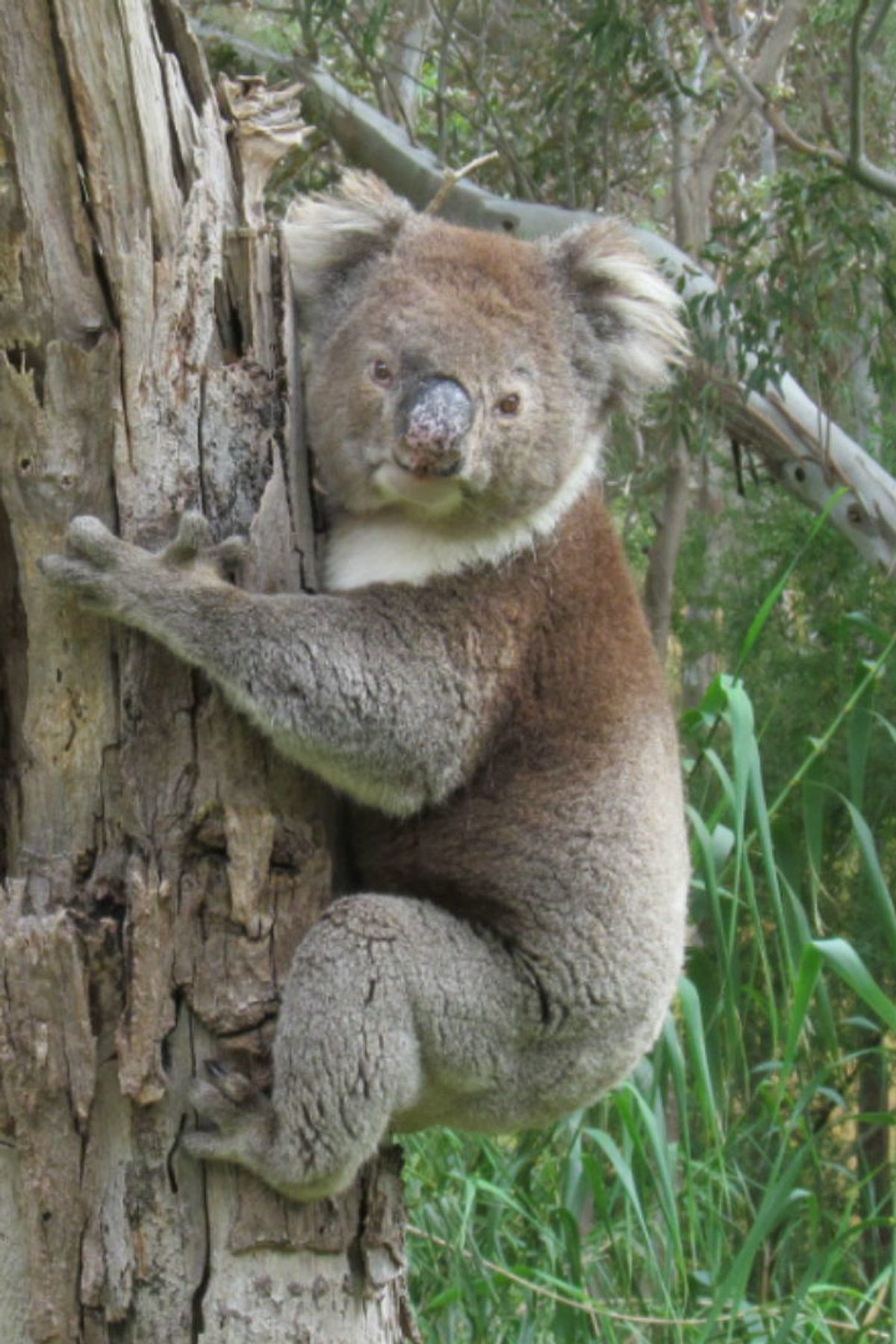
Your guide to the koalas found in South Australia
They’re one of Australia’s most recognised creatures, but did you know that not all koalas are the same?
Their furry ears, black noses, stout little bodies and chilled-out, tree-dwelling habit have won these cute marsupials fans all over the world.
While there’s only one koala species, they have developed subtle variations in size, coat and colour to adapt to different climates.
All koalas can be vulnerable to habitat loss, disease, dog attacks and cars, but here’s some of the things that they don’t have in common:

Their size
Southern koalas, found in South Australia and Victoria, are larger, darker and fluffier than their northern cousins, who’ve cut back to help them cope with the warmer weather.
Southern koala females range in size from 7 kilograms to 11kg, while the males can range from 9.5kg to 14.5kg.
Northern koalas, found in Queensland and New South Wales, can be as small as 4kg to 7kg for females and 4kg to 9kg for males.
Their fur
All koalas have white fur on their chests and ears and lighter coloured fur on their rumps.
However, northern koalas have light silvery-grey fur, while their southern cousins have longer, thicker, reddish-brown fur and more layers of fat to protect them from the cooler weather.
Breeding season
Not surprisingly, climate dictates their breeding cycle too.
In SA koalas breed from September to February, with births between October and April.
In Queensland this happens between June and December, with births from November to February.
Did you know?
- Koalas have individual fingerprints, like gorillas, chimpanzees and humans.
- Their nose markings are also unique and can help identify them.
- Like their closest relative, the wombat, koalas have a hard rump. Wombats use theirs for defence, but being more passive and laid-back, koalas just use theirs to sit comfortably in tree forks for long periods.
On a more serious note, a 2018 study by the Australian Museum Research Institute sequenced the entire koala genome. It found greater genetic diversity in northern koalas than in the southern populations, making the latter potentially more susceptible to inbreeding and genetic diseases.
So next time you are showing interstate or overseas guests around Cleland Wildlife Park or anywhere else you see koalas, feel free to share your new knowledge.
If you love Australia’s iconic native species, you might enjoy these stories: 10 things you might not know about wombats and 6 native animals that are better in SA.
Main image:Southern koala (image courtesy of Orderinchaos in line with Creative Commons licensing)
This story was originally posted in October 2018.





